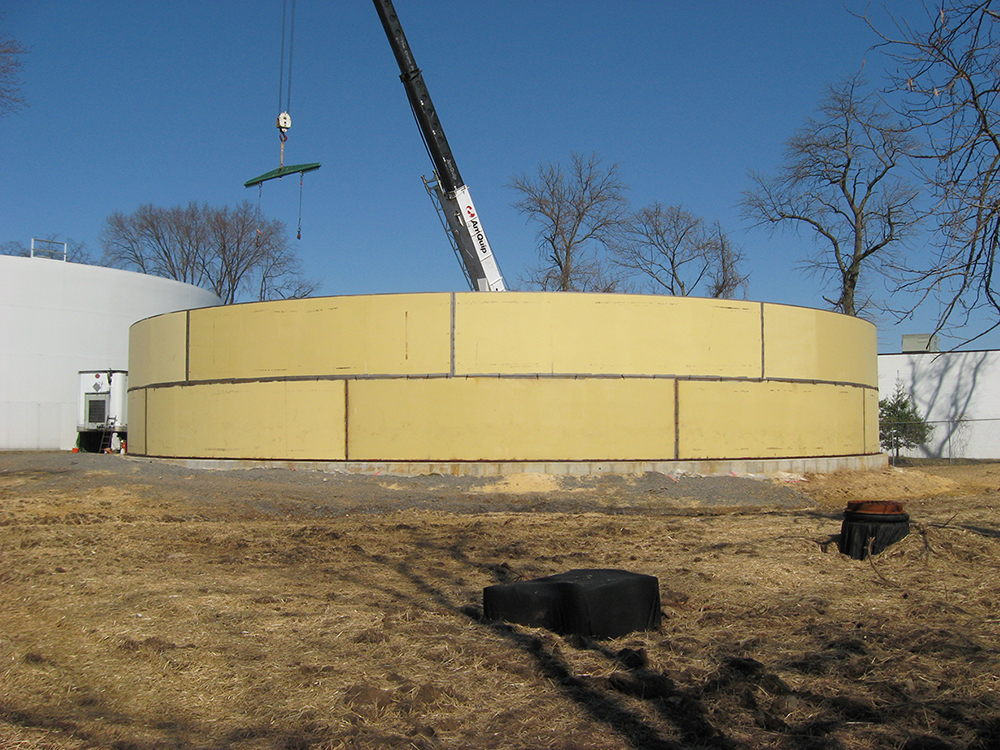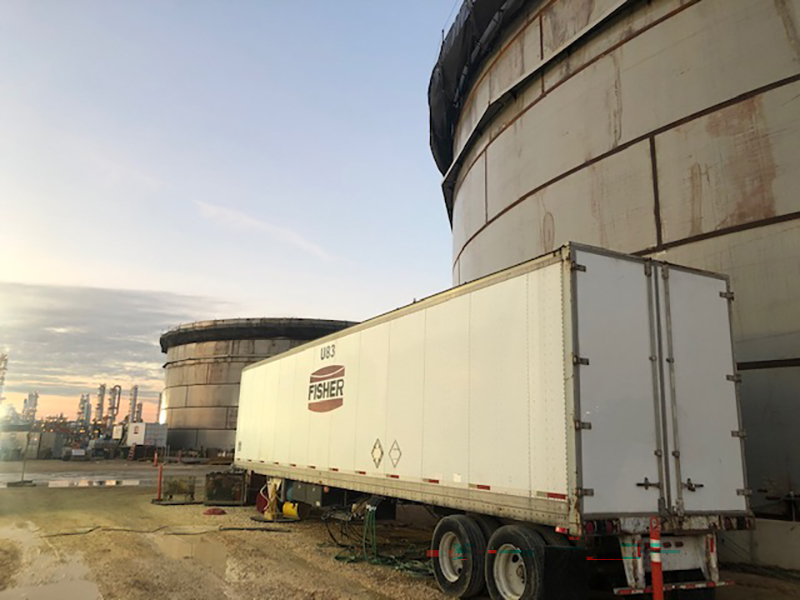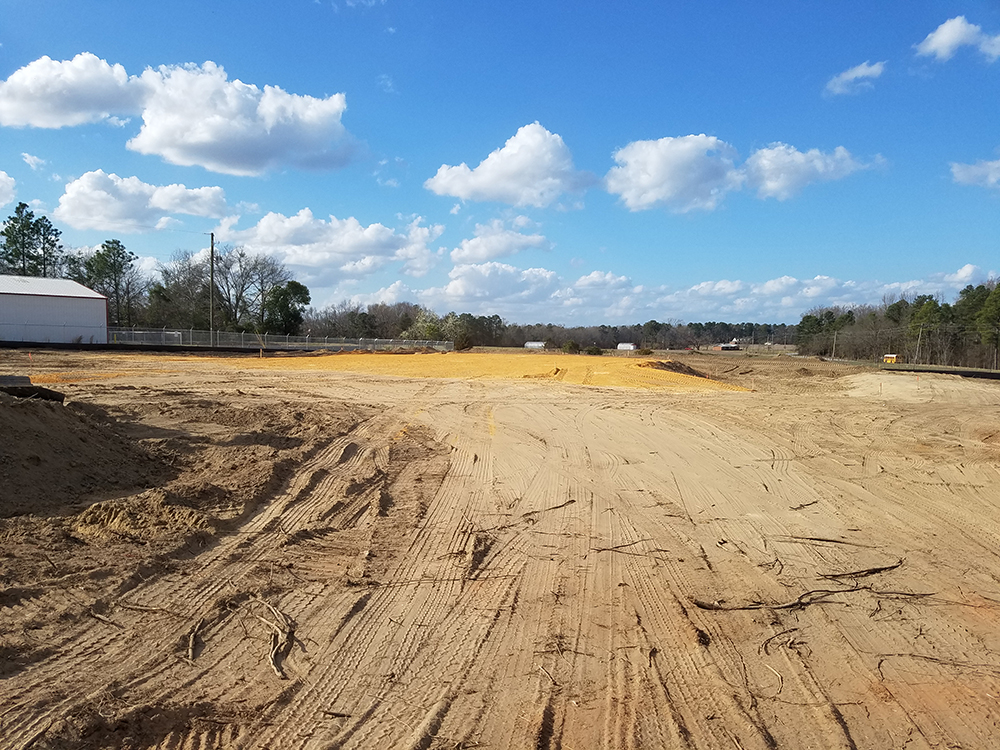If you are planning a tank construction project, there are lots of factors to consider, from the design of the tank itself to the selection of a contractor to build it. There are innumerable areas where a little planning can go a very long way toward successful execution of the project. One of those often over-looked, but potentially costly, areas is the physical condition of the project site.
Ground Conditions Impact Safety
Site conditions refer to what the site looks like, what is around the area where the new storage tank is going to be built, how easy or difficult it is to access the site, where power and water are available (if they’re available at all), etc., and, last but not least, the ground conditions. OSHA defines ground conditions as “the ability of the ground to support the equipment (including slope, compaction, and firmness).” Is the site wet? Is it dry? What happens in that area when it rains? Does the site drain, or does it form a small lake? Ground conditions can be a major problem if not considered/addressed in the early stages of the project.
For tank builders, ground conditions on any tank construction site are a major issue, especially in terms of crane operations. As we discussed in our post last week, about NCCCOO Crane Certification, tank contractors rely on the lifting power of cranes throughout the construction process. Ground conditions definitely impact how, when and where cranes can be used to support tank erection projects. Per OSHA, “It is ultimately the controlling entity’s responsibility to make sure sufficient improvements to ground conditions are made for the crane to be assembled or used within the requirements of section 1926.1402(b). ” The “controlling entity” is typically the General Contractor. OSHA says the controlling entity is responsible for ground conditions, however, it behoves the tank contractor as well as the General Contractor to assess and evaluate ground conditions before it’s time to bring a massive crane to the site.
Deal With Ground Conditions First
If ground conditions are not adequate for safe crane operations, action must be taken to remediate the situation. Water on a site is typically the villian – if water doesn’t drain effectively, that’s a crane operation problem waiting to happen. OSHA says: “section 1926.1402(e) requires employers of crane operators to “have a discussion” with the controlling entity if ground conditions are inadequate under paragraph (b)). See 75 Fed. Reg. 47,933-35.” A pre-construction or even pre-bid site visit can help the tank builder and/or crane operator anticipate (or even observe) potential ground condition problems, and work with the controlling entity to plan for solutions.
Deal With Ground Conditions Daily
Once a storage tank construction project is underway, the tank contractor and crane operator must be aware of ground conditions at all times – an overnight rain shower can easily turn a site that was perfectly safe into a modern day La Brea Tar Pit for cranes. OSHA requires constant monitoring: “…section 1926.1412(d)(1)(x) requires a competent person to inspect the ground conditions each shift to ensure proper support of the crane. In addition, section 1926.1402(e) requires that the operator or assembly/disassembly director notify the controlling entity of inadequate ground conditions.” This means that before the crane is employed in the day’s tank building work, an authorized person must inspect the site, looking specifically for any hazards related to how the crane will function. Are the outrigger pads large enough to support the crane and any potential load? Are the crane mats properly positioned and adequate for the day’s work? What does the ground around the crane look like – has there been any rainfall, water collection or shifting in the soil?
Crane Experience Does Not Equal Crane Safety
Even when the ground conditions have been thoroughly evaluated and ameliorated as needed, there’s still a huge risk factor related to safe crane operations and ground conditions, and that is the assumption that well trained, experienced operators can handle and any all types of site conditions. Everyone assumes that Joe Crane Operator is equipped to work in whatever site conditions exist on a given day – because he’s seen it before. Experience goes a long way, but even the most skilled crane operator cannot operate safely when wet, soggy ground jeopardizes the stability of his machine. Once a few thousand pounds of steel plate starts moving in a direction it’s not supposed to go, gravity generally wins. At best, equipment and property gets damaged, projects get delayed, and somebody has to foot the bill. At worst, lives and livelihoods are lost.
Ground Conditions Should Never Be An Afterthought
Crane operators and tank builders can employ outrigger pads and crane mats to provide extra stability in less than perfect conditions, but establishing optimal site conditions before a project starts is the first step toward safe crane operations. Educating the construction team and anyone involved with crane operations about the potential hazards and the need for constant observation of ground conditions must also be a priority. Project owners and General Contractors/EPC Contractors cannot afford to overlook the potential impact ground conditions can have on their projects. Selecting tank builders and crane operators who are aware of the importance of ground conditions and are vigilant in observing changing conditions is an effective way to address and solve this significant challenge in tank construction.
Planning a tank construction project? We can help! Visit our Pre-Construction Services page for more info.
For more information about OSHA’s ground conditions requirements, visit OSHA.
For more information about NCCCOO’s crane safety certification, visit NCCCOO.
Click here to read more of our blogs





